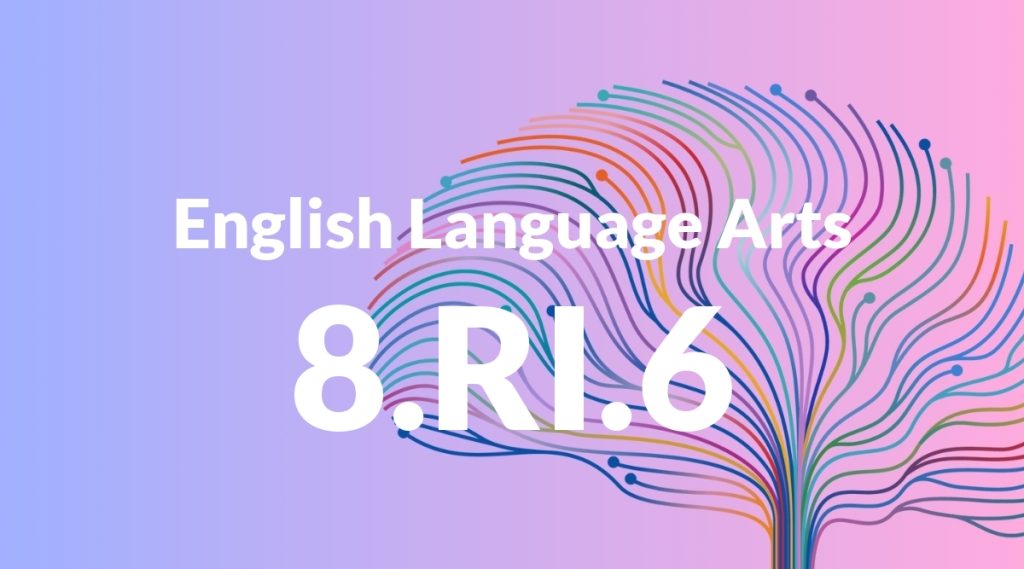Standard: 8.RI.6 – Determine an author’s point of view or purpose in a text and analyze how the author acknowledges and responds to conflicting evidence or viewpoints.
Grade level: Grade 8
Subject: English Language Arts
Domain: Reading: Informational Text
Teacher Overview
This standard emphasizes the importance of understanding an author’s intent and perspective, which is crucial for developing critical reading skills. It helps students discern bias, evaluate arguments, and appreciate diverse viewpoints, laying the groundwork for higher-level analytical thinking. Students should be comfortable identifying main ideas, supporting details, and different text structures. They should also have some experience with distinguishing between fact and opinion.
Mastering this standard prepares students to critically evaluate multiple texts, synthesize information, and construct well-supported arguments, skills essential for advanced academic work and informed citizenship.
Common Misconception 1
Some students might think that an author’s point of view is always directly stated in the text. This is incorrect because authors often imply their perspective through subtle clues like word choice, tone, and the inclusion or exclusion of certain information.
Intervention 1
Use guided reading exercises where students highlight words and phrases that indicate the author’s tone and perspective, followed by group discussions to infer the author’s point of view.
Common Misconception 2
Another common misconception is that conflicting evidence or viewpoints undermine the author’s purpose. This is not necessarily true; skilled authors often acknowledge and address opposing views to strengthen their own arguments.
Intervention 2
Present students with texts that include counterarguments and have them analyze how the author addresses these points. Discuss how acknowledging opposing views can enhance the credibility of the author’s argument.
Prerequisite Knowledge
Students should have a basic understanding of identifying main ideas and supporting details in a text, as well as recognizing different text structures and purposes.
Subsequent Knowledge
Students will develop the ability to critically evaluate multiple texts on the same topic, synthesize information from diverse sources, and construct well-supported arguments and analyses.
Instructional Activities
- Close reading of opinion pieces to identify the author’s point of view
- Debates on current events, focusing on how authors present and counter opposing views
- Group projects analyzing historical documents for bias
- Writing assignments where students must argue a position while addressing counterarguments
- Interactive lessons using news articles to identify bias and perspective




